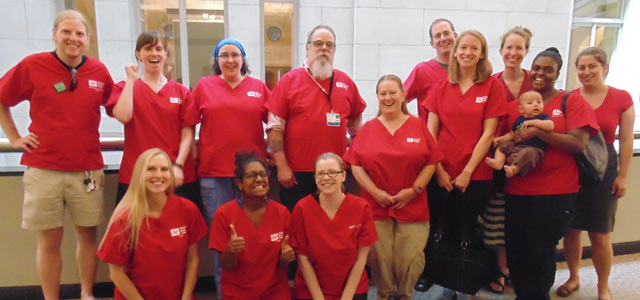Press Release
DC Council Committee Passes Key Bill to Protect Hospital Patients with Safe RN Staffing

Registered nurses who work in hospitals across the District of Columbia applauded a vote today by the District Council’s Committee on Business, Consumer, and Regulatory Affairs to approve safe hospital staffing legislation that would improve public safety and protect vulnerable hospital patients. The BCRA committee approved the bill by a vote of 4 to 1.
“Today the committee took an important step to improve safety in District hospitals by assuring our patients have safe staffing at all times,” said Stephanie Sims, RN, National Nurses United chief shop steward at MedStar Washington Hospital Center. “We particularly want to thank committee chairman Vincent Orange for his leadership and commitment to improving patient care in all DC hospitals.”
“Now we strongly urge the Committee on Health and Human Services to quickly pass this bill and send it to the full Council for a vote,” said Sims. “Every day that passes without these strong mandatory standards puts more patients at risk. Passing this bill into law expeditiously will protect our patients and prevent unnecessary pain and suffering.”
The bill would set specific mandatory limits on the number of patients RNs can care for (nurse-to-patient ratios), with additional staffing required based on individual patient acuity. Council chairman Phil Mendelson re-introduced the bill this year, with co-sponsors Council members Orange, Elissa Silverman, Charles Allen, and Anita Bonds as B21-0132, the “Safe Working Conditions for Healthcare Workers Amendment Act of 2015.”
The bill is modeled after a highly successful California law that since its implementation a decade ago has saved thousands of patient lives, promoted improved overall quality of care, and helped keep the state’s most experienced nurses at the bedside.
“California’s safe staffing law has been a great success, improving the care outcomes of millions of patients,” said California RN Deborah Burger, a Co-President of National Nurses United. “Nurse-to-patient ratios is sound public policy, by improving patient outcomes, cutting workers’ compensation costs, keeping nurses at the bedside and raising the bar for public safety. There is simply no substitute for mandating minimum nursing staff levels.”
Decades of U.S. and global research studies have documented the positive effect of improved nurse staffing. Three recent examples:
- A 2015 study in the Journal of Advanced Nursing found that patients in understaffed units had a significantly greater risk of surgical wound infections, sepsis, pneumonia, upper gastrointestinal bleeds, urinary tract infections and other adverse outcomes than patients with safer nursing care. The study also noted that each adverse patient event increased costs by $8,000, plus increased length of the hospital stay by seven to eight days.
- California’s ratios have slashed occupational injuries and illnesses by 31.6 percent for RNs and 38.2 percent for LPNs (licensed practical nurses) according to a 2015 study published in the International Archives of Occupational and Environmental Health. This finding takes on added significance following an award winning National Public Radio series on the dramatic rise in nurse workplace injuries and the call by the Obama administration for improved occupational safety standards in hospitals.
- Mortality rates were significantly higher for patients admitted to stroke units with fewer nurses on weekends, according to a 2014 study in PLOS Medicine, the equivalent of one excess death per 25 admissions.
The most extensive study of California’s ratios law on patient outcomes remains a 2010 University of Pennsylvania study in Health Services Research. It found that New Jersey hospitals would have 14% fewer patient deaths and Pennsylvania 11% fewer deaths if they matched California’s ratios in surgical units, and that fewer California RNs miss changes in patient conditions because of their workload.
National Nurses United is the largest organization of registered nurses in the United States with 185,000 members nationwide, including 4,400 in the District of Columbia.